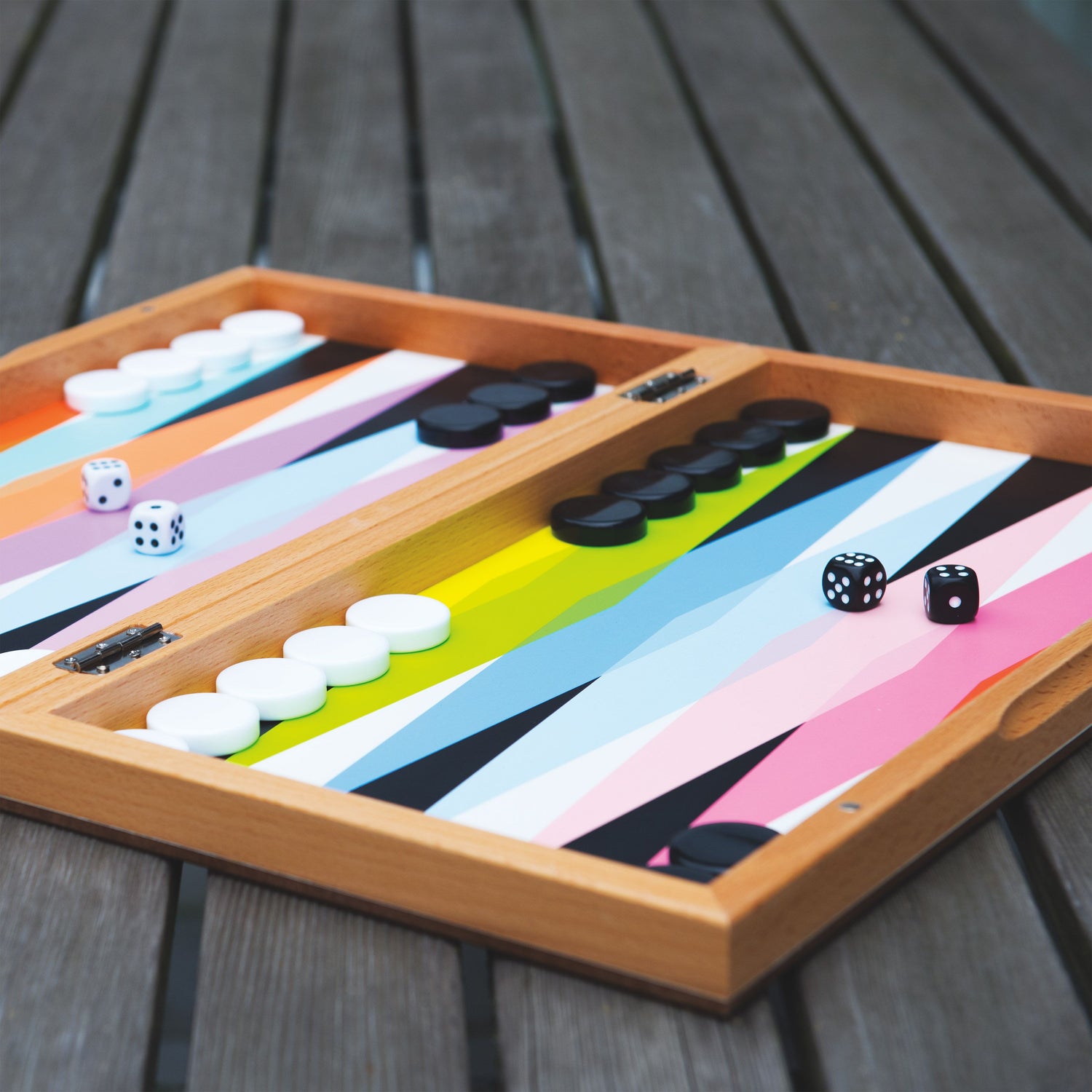Backgammon evolved from ancient games such as Rome’s Ludus Duodecim Scriptorum, making it over 5,000 years old. Thanks to such popularity, it’s become the national game for eight countries, including Egypt, Turkey, and Greece. What makes backgammon so compelling (and worthy of worldwide tournaments) is its balance of chance by incorporating dice rolls, and strategy. It’s also very easy to learn and can scale in difficulty depending on who you’re playing; so, finding the right backgammon opponent can be its own fun challenge.
How to Play Backgammon
Backgammon is a two-player game where each player controls 15 pieces, aka “men” or checkers, one black and one white. The first player to remove their pieces from the board wins.
A board consists of 24 arrow-shaped spaces, the colors split into alternating rows. Six spaces, or “points,” take up each quadrant. The home board for the white checkers is on a player’s right, while the home board for the black checkers is on a player’s left. The white checkers only move counterclockwise, and the black checkers move clockwise.
Each player tries to move their 15 pieces around the board until they can remove them from play by getting them to the edge of the home board. Removing a piece is known as “bearing off.” The starting position for all the pieces are as follows:
![Backgammon Setup[Zoomable]1024x1024](https://cdn.shopify.com/s/files/1/0200/7616/files/backgammon-setup_1024x1024.png?v=1663978250)
Players move their checkers to their home quadrant to remove them from play. The player’s home quadrant contains the six rows in the quadrant originally occupied by their opponent’s two checkers (opposite left for player one and opposite right for player two).
Moves and Rules
Players each roll one die to see who goes first. The first player moves spaces equal to the total of that first roll (their die and their opponent’s). After that, players roll both their own dice. Gamers move up to two pieces equal to the total of the dice roll. If moving two pieces, each piece moves the same as a number on a die. For example, if you roll a 2 and a 6, one piece must move 2 and the other 6 (or 6 and then 2).
- If you roll doubles, you can move that number four times.
- You can move to a space with only one of the opponent’s checkers. Your opponent’s piece is then bumped to the middle of the board, aka “jail” (which divides the four quadrants). In order to remove the piece from jail, they have to try to get the piece into their home quadrant on their next turn.
- To escape jail, the roll must include a die with the number of moves to a free space, following rules about blocked spaces, to return a checker to play. Otherwise, that player passes their turn.
- You cannot move a piece to a point where your opponent has at least two checkers.
- You cannot move the same piece twice if it would land on a blocked space at the end of a single die’s count. For example, if you roll a 3 and a 4 and both the third and fourth space are blocked, you cannot move your checker to the seventh space, even if it’s free.
Winning the Game
Once all 15 pieces are in your home quadrant, you can begin to roll dice to move them off the board and onto the side of the home board. You must roll at least the number of spaces plus one to bear off. Remove all your pieces to win! We are obviously huge fans of the game, hence the large variety of forms to check out, from large quilted blankets to an elegant set inspired by San Francisco’s skyline.







